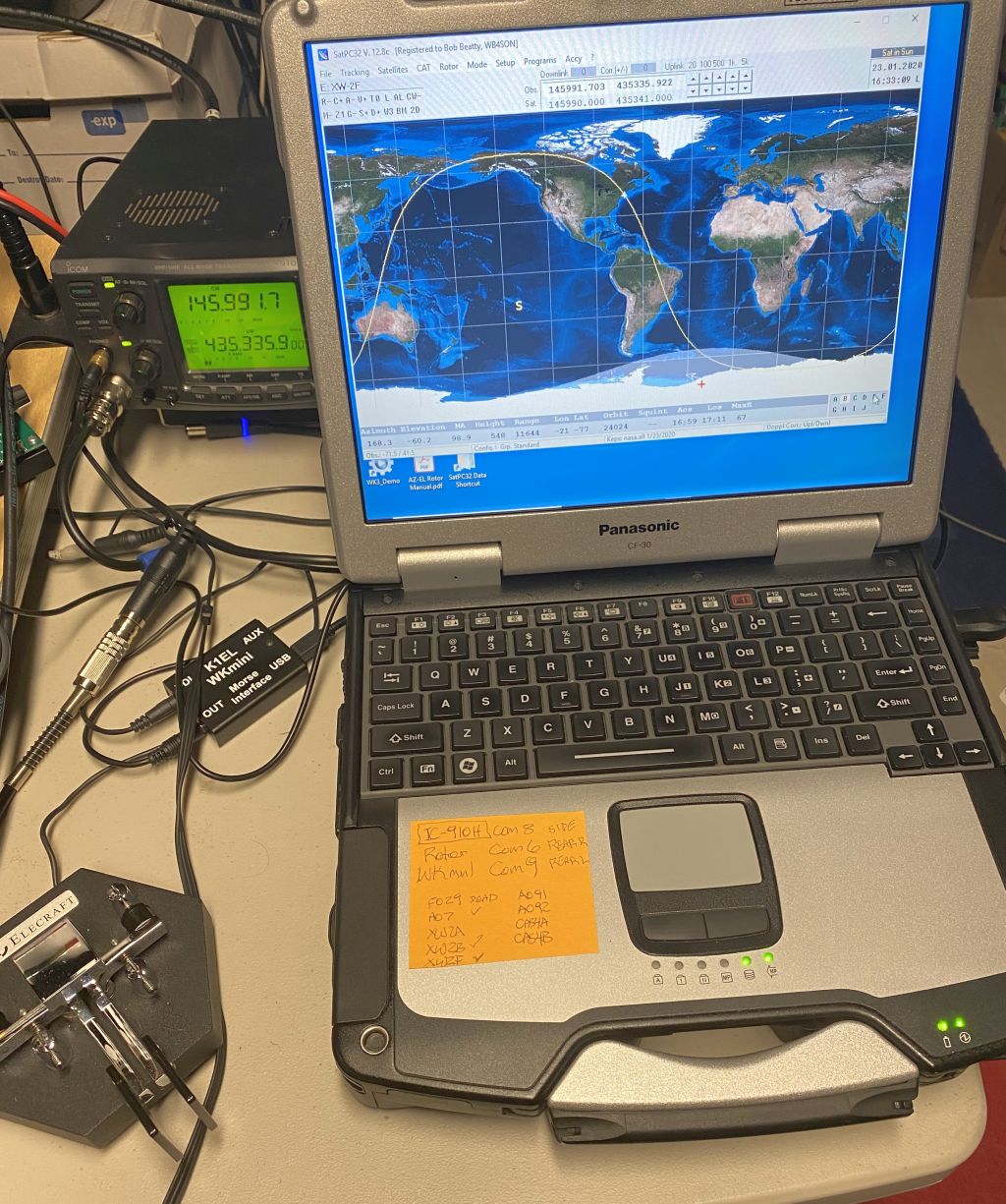I don’t have the stamina of my youth, and especially don’t push things in New England Winters. That said, this coming weekend is Winter Field Day. I’ve participated the past five years with my club, W1SYE Newport County Radio Club. My role is to make a single satellite contact for the 1500 point bonus.
It is with much sadness that I note the demise of FO-29, AO-73, AO-85, XW-2C, and XW-2D. That leaves AO-91, AO92, SO-50, AO7, CAS4A, CAS4B, XW2A, XW2B and XW2F in operation — still, nine birds is pretty rich. I did the orbital predictions for Saturday and Sunday, daylight passes only, and found three on Saturday, and six on Sunday. So I am going to focus my operation on Sunday.
Part of the “secret sauce” to having a successful contact in the field is to plan ahead. Temperature and the sun’s elevation impact the oscillators on the satellite as well as the ground station gear. Last time I used my portable setup was SFD when the sun was well above the equator, and temperatures were quite high. Now, for WFD, the sun is below the equator, and its in the 30s/40s outside. That means it is critical to check every possible bird and adjust the Uplink Calibration so you will find yourself quickly on the downlink.
And, of course, the other part is to be sure that our “wireless” gear, with all those wired connections (key, headphones, mic, PTT, keyer, computer, battery, antenna cables, etc.) are working. For example, when I opened my kit, I found I had the wrong power cable for my IC-910H.
So far, I’ve made a couple of CW contacts (NA1ME on AO7, and VE3XC on XW2B), plus SSB contacts (KP3A and WB8DDV on XW2F) and adjusted my uplink calibration on 3 of the 9 birds. The other’s will be done over the next few days. Incidentally, the only one off by more than 100 Hz happened to be AO-7, which required a -3000 Hz Uplink Calibration offset.









